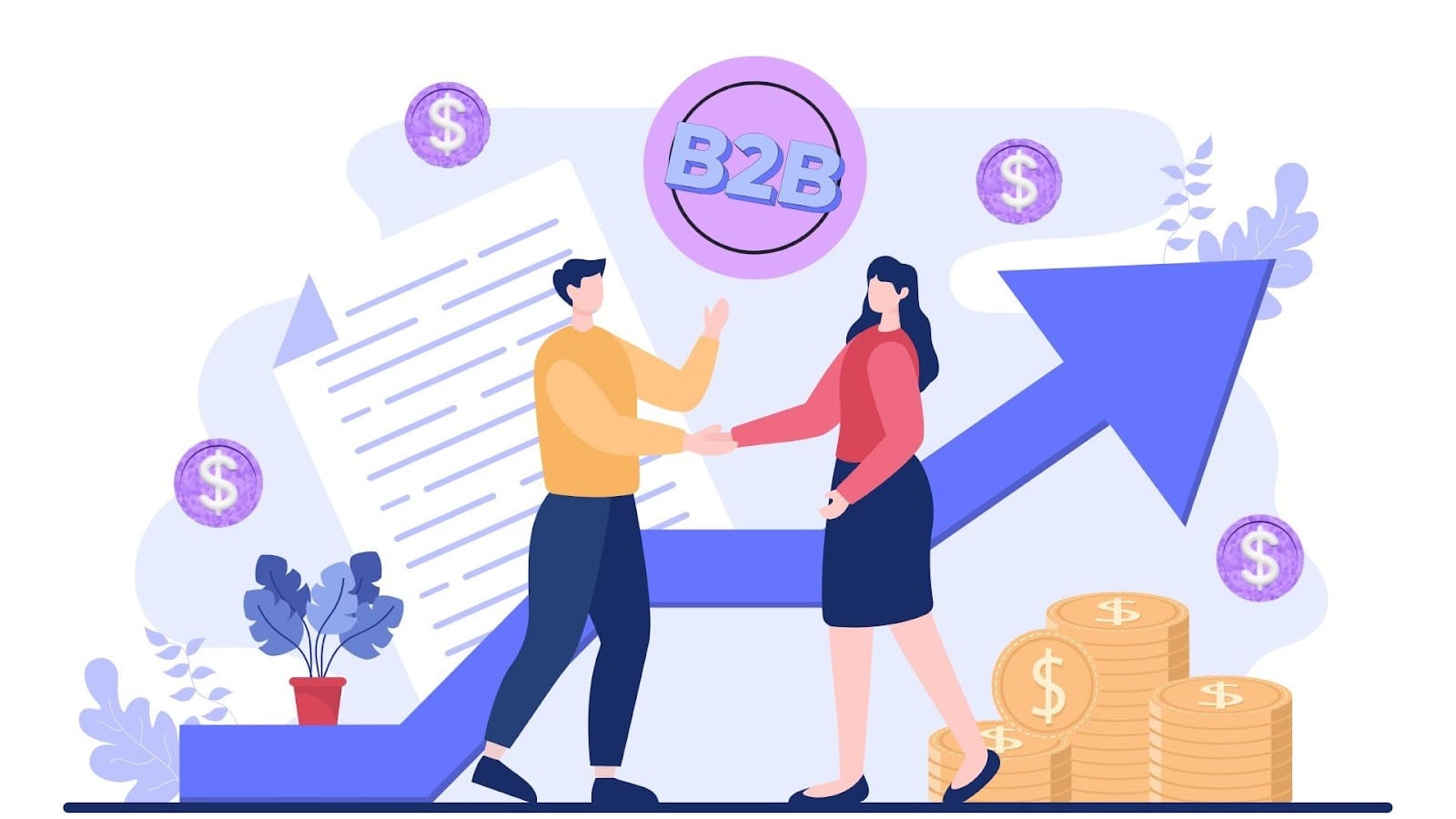A Guide To Increasing Lead to MQL Conversion Rate in Sales
Discover proven strategies to improve your lead to MQL conversion rate, plus industry benchmarks and solutions to common sales pipeline challenges.

Increasing your lead-to-MQL (Marketing Qualified Lead) conversion rate is not just a goal — it’s a necessity. With 61% of marketers reporting that generating high-quality leads is their biggest challenge, refining how you nurture and qualify leads can make the difference between stagnant growth and scalable success.
But improving your conversion rate requires more than just understanding the strategies — it’s about implementing data-backed tactics, aligning sales and marketing, and benchmarking your performance against industry standards.
In this blog, we’ll explore the key stages in the sales funnel, effective strategies to boost your lead-to-MQL conversion, and industry benchmarks that will help you evaluate where you stand.
First, let’s understand the stages your leads pass through as it is crucial for optimizing your lead-to-MQL conversion strategy.
Quick Overview of Sales Stages
Here’s a breakdown of the sales stages and how they correspond to lead categories:
1. Lead (Awareness Stage)
At this stage, potential customers become aware of a problem they need to solve. They are just starting their journey and have limited knowledge about your product or service.
- Lead Activity: Engaging with blogs, social media, ads, or other content that informs them about a solution.
- Goal: Capture these leads and direct them toward a deeper understanding of your product.
2. MQL (Interest Stage)
Marketing Qualified Leads (MQLs) are prospects that have shown a clear interest in your offering. They are more engaged and have interacted with your content or shown some level of commitment.
- MQL Activity: Downloading resources, attending webinars, signing up for email lists, or requesting more detailed product information.
- Goal: Nurture these leads with personalized content and offers that address their specific pain points.
3. SQL (Consideration/Evaluation Stage)
Sales Qualified Leads (SQLs) are prospects that have shown serious intent to purchase. They actively evaluate your product, compare it with competitors, and assess its fit for their needs.
- SQL Activity: Requesting product demos, trial sign-ups, or asking for detailed pricing and feature comparisons.
- Goal: Engage sales teams to personalize follow-ups, answer questions, and guide them through the decision-making process.
4. Opportunity (Decision Stage)
At this point, the lead is ready to make a decision. They are fully aware of their options and are just waiting for the right offer or reassurance to move forward with the purchase.
- Opportunity Activity: Negotiating terms, reviewing contracts, or making final decisions.
- Goal: Close the deal by addressing any remaining objections and providing a strong call to action.
5. Customer (Post-Purchase Stage)
The final stage involves converting leads into paying customers and ensuring their satisfaction for long-term success.
- Customer Activity: Onboarding, using the product, and providing feedback.
- Goal: Maintain relationships to ensure customer satisfaction, encourage repeat business, and foster loyalty.
It's time to focus on how you can optimize these stages to improve your lead-to-MQL conversion rate. Let’s dive into the strategies that will help you move leads more effectively through the funnel and maximize your conversion potential.
Strategies to Improve Your Lead-to-MQL Conversion Rate
By implementing focused strategies that align with industry best practices and are supported by data-driven insights, you can enhance lead quality, drive better results, and ensure a higher ROI.
Define Clear MQL Criteria
A well-defined MQL criteria is the cornerstone of improving conversion rates. Without a clear understanding of what constitutes a qualified lead, your marketing and sales efforts will lack direction, leading to wasted resources and poor conversion outcomes.
- Establish Ideal Customer Profiles (ICPs): Creating detailed Ideal Customer Profiles helps your team identify which leads are most likely to convert. According to reports, companies with clear ICPs have a 67% higher chance of converting leads into customers and 32% higher revenue growth.
- Implement Lead Scoring Systems: Lead scoring helps prioritize leads based on their readiness to purchase. Studies show that companies using lead scoring are 77% more likely to see an increase in conversions compared to those that don’t. Using data from your CRM, you can build a dynamic lead scoring model based on engagement, company fit, and intent signals.
Segment Your Leads for Better Targeting
Effective segmentation ensures that your messages reach the right audience, increasing your chances of conversion.
- Behavior-Based Segmentation: Group leads based on their actions, such as website visits, content downloads, or email engagement. This allows you to tailor your messaging based on their specific interests and stage in the buyer journey.
- Demographic & Firmographic Segmentation: Segment based on firmographics like company size or industry and demographics like job title, ensuring that your sales efforts are focused on the most relevant leads.
Segment Your Leads for Better Targeting
Effective segmentation ensures that your messages reach the right audience, increasing your chances of conversion.
- Behavior-Based Segmentation: Group leads based on their actions, such as website visits, content downloads, or email engagement. This allows you to tailor your messaging based on their specific interests and stage in the buyer journey.
- Demographic & Firmographic Segmentation: Segment based on firmographics like company size or industry and demographics like job title, ensuring that your sales efforts are focused on the most relevant leads.
Optimize Lead Generation Channels
The quality and variety of your lead generation channels play a critical role in improving your lead-to-MQL conversion rate. By diversifying and optimizing these channels, you’ll attract a higher volume of quality leads.
- Diversify Marketing Channels: Distribute your marketing efforts in multiple channels, such as content marketing, paid advertising, SEO, social media, and webinars. According to the Gen ViB Report, 54% of B2B marketers say generating high-quality leads is their top challenge, and optimizing channels like content and paid ads can help address this.
- Enhance Content Quality and Relevance: Creating content that directly addresses the pain points of your target audience is key. According to Demand Metric, 70% of B2B buyers prefer to learn about a company through articles rather than advertisements. Offering high-value, relevant content will help increase your lead quality and, ultimately, your MQL conversion rate.
Unscript.ai achieved a 40% increase in conversions using Floworks’ Alisha AI to send hyper-personalized email campaigns based on lead behavior and lifecycle stage.
Streamline Lead Nurturing Processes
Lead nurturing is essential for converting prospects into MQLs. Effective nurturing keeps leads engaged and guides them through the funnel until they are ready to make a purchasing decision.
- Develop Personalized Email Campaigns: Personalization increases engagement and conversion rates. In fact, according to Experian, personalized emails generate six times higher transaction rates. Segment your leads based on their behavior and demographics to deliver tailored messages that resonate with their specific needs.
- Engage Through Multi-Channel Touchpoints: Utilize a combination of channels such as email, social media, and retargeting ads to engage leads at multiple touchpoints. A study by Omnisend found that businesses that use three or more channels in their marketing campaigns see a 494% higher conversion rate than those that rely on a single channel.
Adopt Marketing Automation to Streamline Processes
Marketing automation tools allow you to scale your lead nurturing efforts without sacrificing personalization.
- Automated Lead Scoring: Set up automatic lead scoring rules that adjust based on lead behavior, allowing you to prioritize high-quality leads.
- Automated Follow-Ups: Automate personalized follow-up emails and messages based on lead activity, ensuring timely and relevant communication.
Floworks’ Alisha AI goes beyond traditional automation by offering intelligent workflows that adapt to each lead’s behavior. For example, if a lead hasn’t responded to an email, Alisha can send a follow-up on both email and LinkedIn, tailored to their previous interactions.
Case Study: Ayna used Floworks to achieve a 4x ROI and reduce lead generation costs by 75% through automated workflows.
Conduct A/B Testing for Continuous Improvement
A/B testing helps optimize your strategies by identifying which approaches work best for your leads.
- Test Lead Capture Forms: Experiment with different versions of your lead capture forms (e.g., form length, CTA placement) to see which version yields the highest conversion rate.
- Test Email Campaigns: Run A/B tests on email subject lines, content, and CTA buttons to identify what resonates most with your audience and boosts engagement.
What to Test:
- Subject lines in emails.
- CTAs on landing pages.
- Design elements like colors or button placements.
Example: Test two versions of an email: one with a direct CTA (“Schedule a Demo”) and another with an educational focus (“Learn How Our Tool Solves X Problem”). Analyze which version generates more clicks.
Align Sales and Marketing Efforts
When sales and marketing teams are aligned, your lead-to-MQL conversion rate improves significantly. Lack of communication between these teams often results in missed opportunities and poor lead quality.
- Foster Regular Communication Between Teams: Aligning the goals, processes, and communication between sales and marketing teams is crucial. HubSpot reports that sales and marketing alignment can increase conversion rates by 38%. Scheduling regular meetings and using shared platforms for real-time updates ensures that both teams are on the same page.
- Define Service Level Agreements (SLAs): Clearly defined SLAs help ensure that both teams understand their roles and responsibilities. For example, setting a rule that marketing will provide MQLs to sales within 24 hours can prevent lost opportunities. According to Forrester, organizations with SLA alignment between sales and marketing see 15% higher MQL conversion rates.
How Is the Lead-to-MQL Conversion Rate Calculated?
To calculate this rate, use the formula:
For instance, if you generate 1,000 leads and 250 of them qualify as MQLs, your conversion rate is:
Why Is Lead-to-MQL Conversion Rate Important?
This metric is a vital indicator of your pipeline's health and the efficiency of your lead generation efforts. Here’s why it matters:
- Pipeline QualityIt ensures that your marketing activities are targeting the right audience. A low conversion rate might indicate that your campaigns reach unqualified or uninterested leads.
- Optimized Lead NurturingThis rate provides insights into the effectiveness of your nurturing campaigns. If leads aren’t converting to MQLs, it may signal a need for more targeted content or better engagement strategies.
- Sales and Marketing AlignmentThis metric helps bridge the gap between marketing and sales teams. A high conversion rate indicates that marketing effectively hands off qualified leads to sales, enabling better follow-ups and higher close rates.
- Cost EfficiencyTracking this conversion rate ensures you’re spending your marketing budget wisely. If you’re generating leads that don’t convert to MQLs, it’s time to reevaluate your acquisition strategies.
The Lead-to-MQL conversion rate provides critical insights into the quality of your lead generation and nurturing strategies. By optimizing this metric, you can ensure that your efforts are aligned with both sales and marketing goals, driving more relevant prospects through the funnel.
How Does This Fit into the Funnel?
The Lead-to-MQL stage is often the first significant conversion point in your sales funnel. It moves prospects closer to becoming Sales Qualified Leads (SQLs), where they are directly handed over to the sales team. A strong lead-to-MQL rate indicates that your marketing efforts are successfully driving relevant and interested prospects down the funnel, minimizing wasted time and resources.
Next, we will understand how your lead-to-MQL (Marketing Qualified Lead) conversion rate compares to industry standards is key to evaluating the effectiveness of your sales and marketing strategies.
Industry Benchmarks for Lead-to-MQL Conversion Rate
Here’s a look at the average lead-to-MQL conversion rates across various industries, based on recent data. This will help you gauge where your company stands and how to optimize your processes accordingly:
Note: The data presented above is sourced from First Page Sage's report on lead-to-MQL conversion rates by industry and channel.
The average lead conversion rate across industries is approximately 2.6% to 3.3%. Many B2B businesses struggle to exceed these benchmarks, often due to inefficiencies in lead management or poor alignment between marketing and sales.These benchmarks can serve as a reference point to evaluate your organization's lead conversion efficiency. If your conversion rate falls below the industry average, it may indicate areas where your marketing strategies could be optimized. Conversely, exceeding these benchmarks suggests effective lead nurturing and targeting practices.
Common Challenges in Improving Conversion Rates
Enhancing the Lead-to-MQL Conversion Rate often involves tackling issues like unqualified leads, misaligned teams, and ineffective follow-ups. Addressing these challenges with targeted strategies can improve lead quality, streamline processes, and boost conversions.
1. Attracting Low-Quality Leads
Many businesses struggle with generating leads that don’t match their ICP, leading to wasted resources and low conversions.
Solution: Implement lead scoring and focus on inbound marketing strategies like content marketing and SEO to attract relevant prospects.
2. Misaligned Sales and Marketing Teams
A lack of collaboration between marketing and sales often results in poorly qualified leads and missed opportunities.
Solution: Foster alignment with shared KPIs, regular sync-ups, and unified dashboards for tracking performance.
3. Ineffective Follow-Up
Delayed or irrelevant follow-ups lead to disengagement.
Solution: Automate follow-up sequences with personalized messaging.
For instance, FiddleCube used Floworks to reduce lost opportunities by 60% with intelligent follow-ups.
Conclusion
Enhancing your lead to MQL conversion rate is crucial for B2B sales success. This blog addressed challenges like low-quality leads, poor alignment between teams, and ineffective follow-ups, offering actionable strategies to overcome these issues. With the right tools and approach, you can streamline your pipeline and boost conversions.
Floworks helps you tackle these challenges with Alisha AI, an intelligent solution that automates lead scoring, follow-ups, and personalized engagement. Companies like FiddleCube and Unscript.ai have already achieved remarkable results using Floworks to optimize their sales processes.


